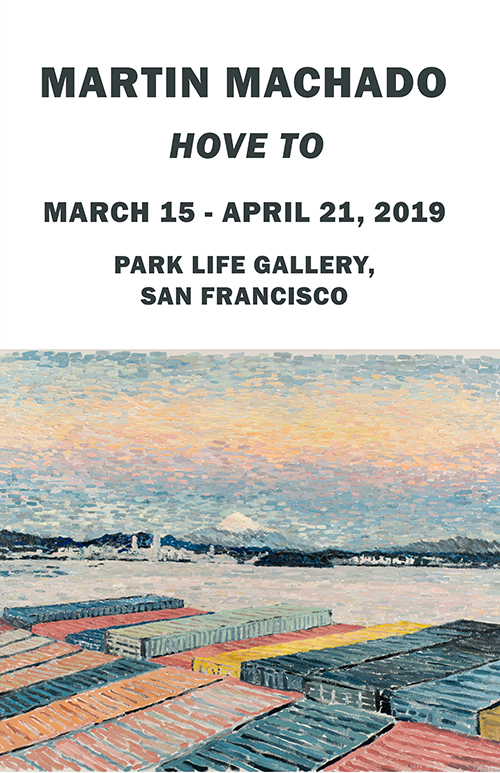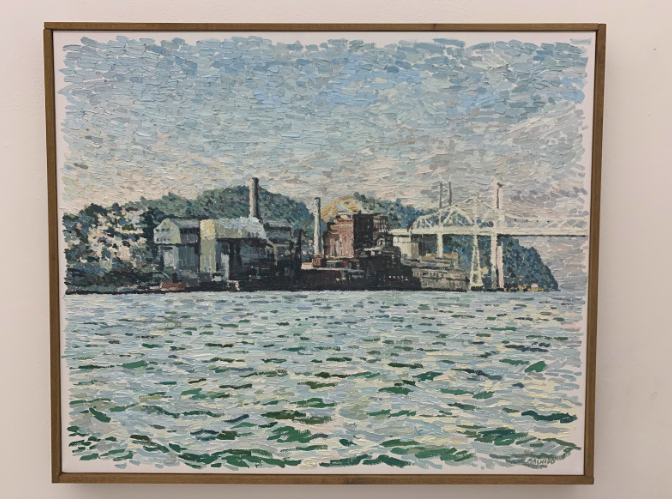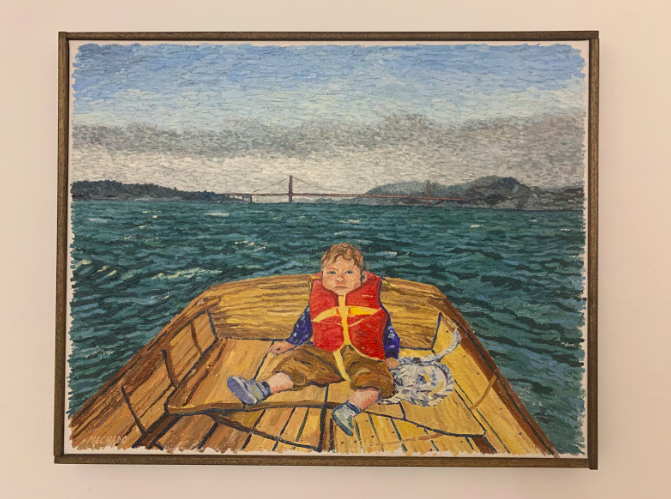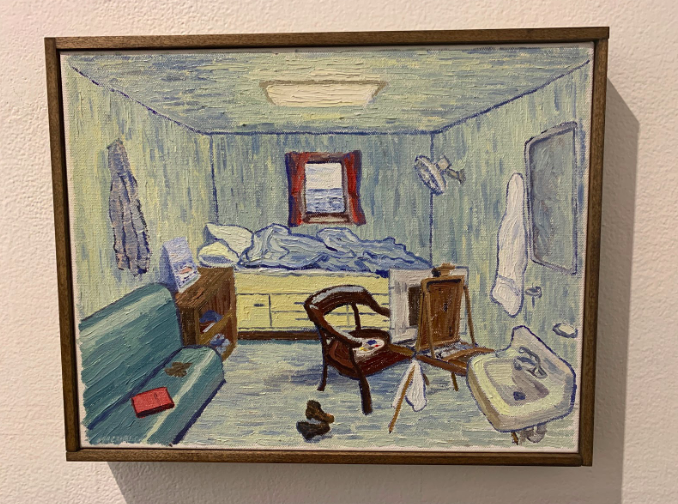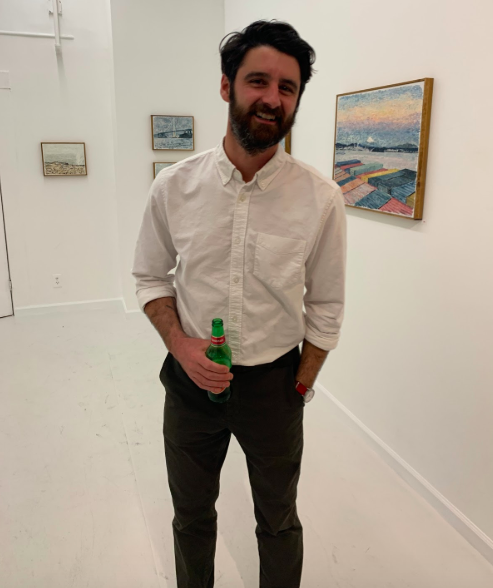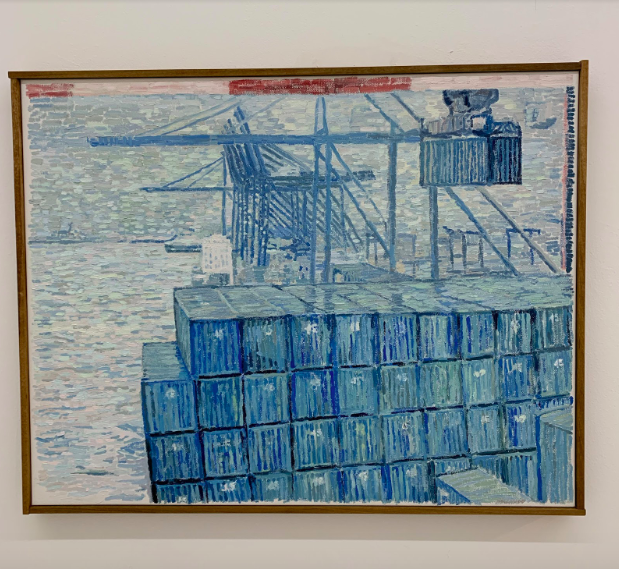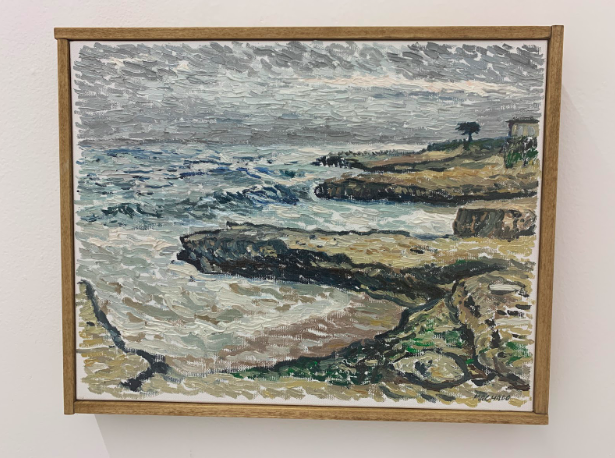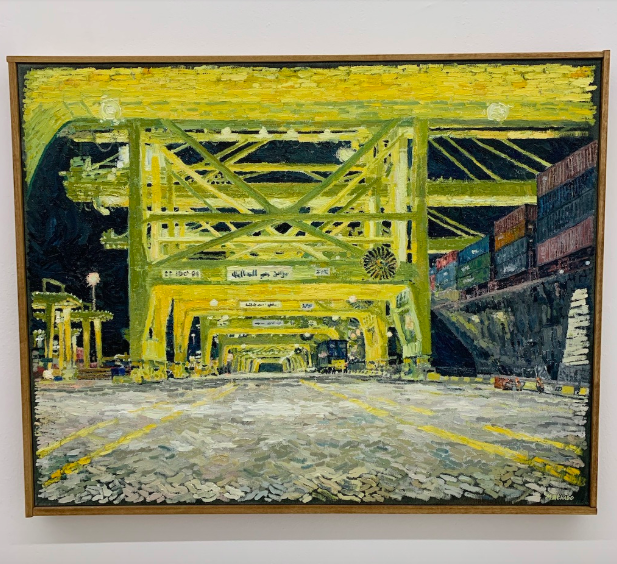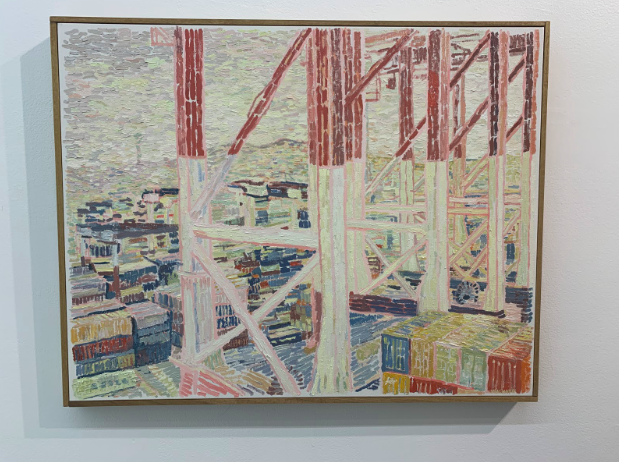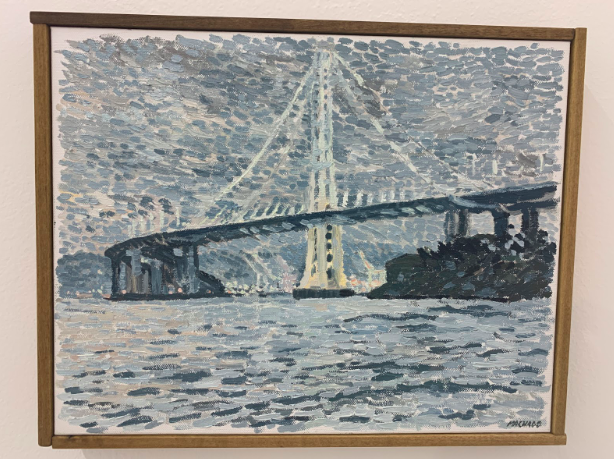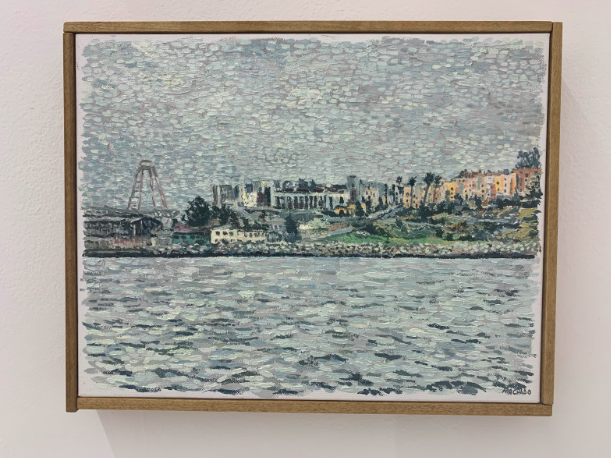Martin Machado’s solo show Hove To at Park Life Gallery chronicles scenes from his days at sea working on commercial fishing vessels and international containerships. In dialog with these oil paintings are others set in and around his home port, the waterways and shorelines of the San Francisco Bay. The visual terrain, as well as the show’s title, suggest a tidal pull of opposing energies, of pressure and counterpressure.
In this exhibit, Machado captures the march of material progress, as well as the commonality of human emotion across time, location, or personal history. A painting of crates in China’s Qingdao trading port suggests both the wealth of nations and the poverty of individual laborers. A scene from Jebel Ali, the busiest port in the Middle East, vibrates with the electric energy of yellow and white, even as a pitch-black background suggests the relentless, sleepless nature of global commerce. Metaphorical duality permeates; yet, rather than creating a sense of discord or tension, Machado deftly steers his viewer towards a symmetry of integration, an urge to harmonize a world in which perspective abides as a powerful tool.
Machado achieves a chalky quality on the surface of the paintings, as though working with a powdered pigment. In some cases this creates a dimming effect, at other times, a shinny brighter hue. The utilization of white is particularly notable as Machado often paints with white as a primary element, rather than simply as an accent on white objects or in the case of a classic marine painter, a highlighting of crashing waves. Machado gives white equal status, alongside the rest of the color spectrum, both in his depiction of water and in what appear to be crevices between the other colors used to capture the surface, machinery, and cargo of various ships. Machado gains a softening effect by placing white in proximity to other colors, instead of by blending white in. By laying white side by side with red, blue, and yellow, he lightens their intensity without altering their saturation.
Consistent with French Impressionism, the brushwork in these paintings is broken and short to project reflected light from water and objects. There is some impasto work, adding a textural element that also adds illumination. The raised surface creates a three dimensional quality and sense of action, which brings the viewer closer to the experience of being on or near the constant motion of the sea.
The ancient Greeks regarded the luminosity and movement of water to be its most telling descriptor. Color value or chroma are much more important than hue in Homer, who will speak of a “wine dark” but never a purely blue or green sea. Similarly, Machado paints his most personal portraits of seascapes in grey-eyed and honeyed tones. In contrast to the scenes of industry, he uses smaller 11x14” canvases to capture the dance of sunlight on water and surrounding nature. These solitary vignettes are linked in size to the intimacy of another small canvas, which invites the viewer into the scene of his quarters while aboard ship. It works as a self-portrait of sorts. He paints his own easel, the sink in his room, and a chair which makes it reminiscent of Van Gogh's famous “Bedroom at Arles”.
Machado recreates his ship-board bedroom setting in an interactive installation. The artist allows visitors to enter a sailor’s world by lying on a small cot to watch old seafaring film clips on a screen in the shape of a porthole. Tacked to the wall are the fictitious sailor’s “mementos,” in actuality contributions from Machado’s friends, including photographer Matthew Bajda, Futurefarmers Joe Riley & Audrey Snyder, photographer/commercial fisherman Corey Arnold, and others who represent Machado’s real, as well as imagined, community of ocean folk.
There is something profoundly solitary about these paintings. Perhaps seeing the gallery recreation of the cramped quarters Machado lives in for months on end, one can’t help but imagine the personal sacrifice these paintings represent. By assembling a sleeping quarters with his T.V. essentially lying next to him, his audience experiences a sense a loneliness, even claustrophobia. Machado avoids populating the canvases with people, with one notable exception. In a painting that is hung just above and beyond the T.V. monitor, his own son sits at the end of a row boat wearing a life vest and floating far from shore. There is much emotion packed into this single painting. It speaks to a future filled with adventure, and perhaps moments of solitude. It also contains a narrative of drifting with -- not pushing against -- nature. There is melancholy here too, as Machado depicts his own son as a future sailor. The boy stares at the viewer, at Machado the painter, with a look on his face conveying both resignation and curiosity.
We are all ocean folk, in a sense; this globe being 71 percent water. We are unified by water and dependent on it to absorb carbon dioxide. There is a palpable open question posed by scenes of serene beauty amid industrial activity. It may be a glimmer of hope or a jolt to activism that, in certain paintings, Machado depicts images of what abides in the world of nature (the snowy tip of Mt. Fuji) and in the world of the heart (his young son in a row boat). These are not symbols. Compositionally, they stand as totems or horizon lines from which the eye cannot falter without losing its way.
Water and sunlight themselves act as a further unifier and muse. Machado’s joy and reverence in illustrating the shimmer of mobile light on shivering waves is infectious. The soft, watery, wistful quality of his palate, renders delicate dots and dashes ala Morse code. What he communicates is both timeless and immediate.
It is impossible not to think of Homer’s Odyssey when examining the work of a mariner who spends long periods of time away from his family. Homer remains a touchstone not only for being the world’s first poet, but because the wanderer’s story teaches us about the vagaries of human experience and how to decide -- despite challenges we encounter along the journey -- which way to point. Machado’s paintings stir up this deeper level of existential consideration and they do so with consummate visual lyricism. It is a distinct lingering pleasure to see this work. —Tamsin Smith & Matt Gonzalez
Martin Machado, “Hove To”, March 15 -- April 21, 2019 @ Park Life Gallery, 220 Clement Street, San Francisco.




